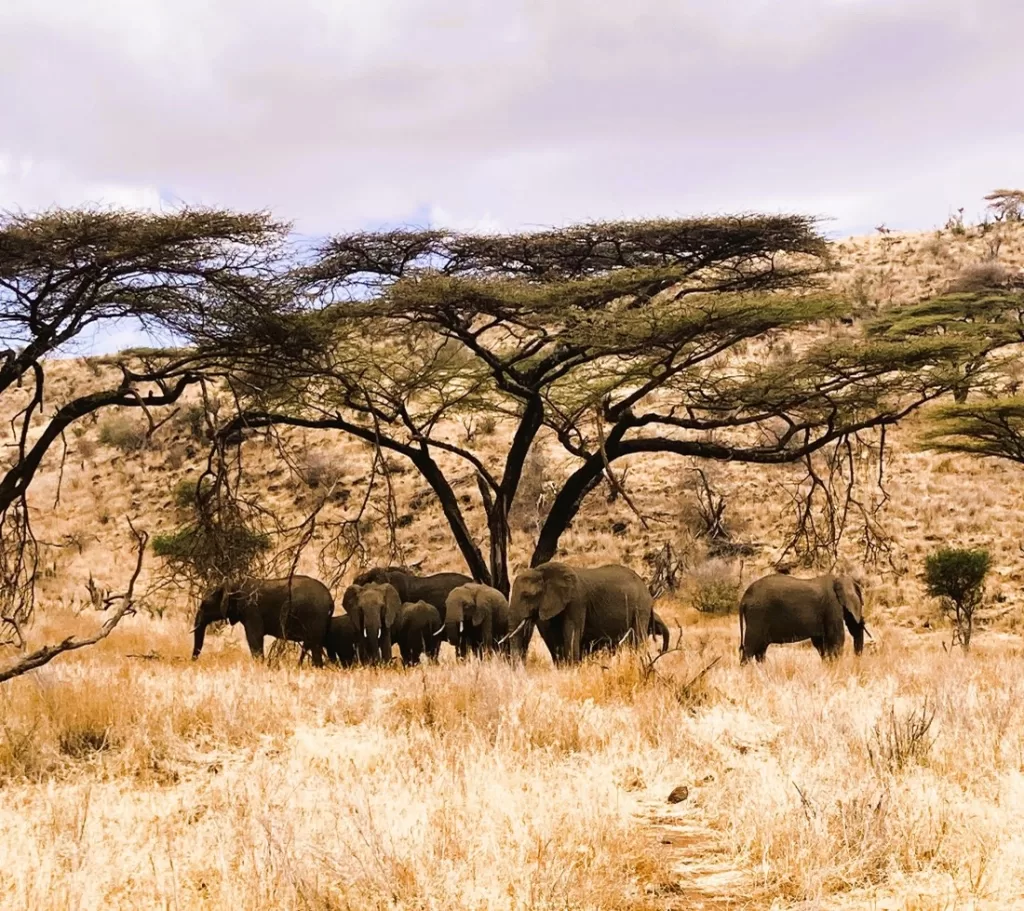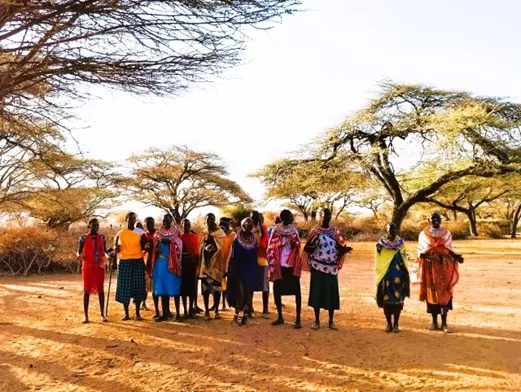We are nature and nature is us
Africa is home to extraordinary biodiversity and ecosystems with a diverse range of habitats, from the second largest rainforest in the world in the Congo Basin to the Sahara Desert, its great mountain ranges to the rivers and seas. It is also home to an abundance of animal species, all of which are essential to the planet’s wellbeing and efforts to preserve it have never been more important. Most of these areas have been preserved for centuries thanks to the communities that live in them and act as custodians. For them, these ecosystems are a central part of their identities, for production and preservation through collective governance systems guided by traditional customs and rituals. Celebrating International Biodiversity Day and Africa Day in May, we must continue to preserve our natural heritage and protect against biodiversity loss from overexploitation, human settlement, and the growing climate crisis.
The progressive disappearance of biodiversity due to industrial plantations, mining, and other extractive activities, as well as climate change, has aggravated land dispossession across the continent. Additionally, the establishment of protected areas such as nature reserves, national parks and most recently, forest reserves for carbon markets to “save the planet” from climate catastrophe, has meant not just the loss of land and water bodies, but also, and mostly, the loss of a way of life, culture, and identities.
For the Baka people of the Congo rainforest, the forest is an essential part of their identity, representing their culture, their home and their history as a people. Michel Zamoutou, a 74-year-old Baka man shared, "The Baka have always protected the forest. We don’t destroy the trees, we only take the sap, the bark and the leaves. We don’t kill animals; except those we eat”.
The colonial legacy of conservation
Since the colonial period, when the imperial elites grew an appetite for ‘the wilderness’, protected areas have been established as human-free zones, through massive and militarized displacement of local communities. Then – as it is now – conservation was based on a separation between humans and nature. As opposed to the harmonic relationship which characterized most indigenous people’s lifestyles.
African communities have been able to maintain a democratic way of existing in nature, celebrating human and non-human life, and acknowledging the diversity needed for a healthy environment. Even before words such as “conservation” or “sustainability” were coined by mainstream development theory, indigenous peoples through their lived experiences and practices understood the importance of a well-integrated system to govern all forms of life, through continuous negotiation around what is permissible, what is detrimental to Life and how these decisions are made.
As part of the Global Tapestry of Alternatives (GTA), an initiative seeking to create solidarity networks and strategic alliances amongst alternatives on local, regional and global levels, WoMin visited Kenya in August 2023 for the GTA Assembly to learn and share ideas, experiences and visions on a deeper level. There, a modest conservation initiative offered a glimpse of a new approach to conservation guided by principles of common property land tenure. The II Ngwesi Community Conservancy, while not possessing all the solutions, presents a potential transitional model that embodies a more democratic approach to conservation efforts, incorporating African indigenous stewardship practices.
The Case of II Ngwesi Community Conservancy
II Ngwesi is the 1st community-led conservancy in Africa, founded in 1995 in Kenya. The conservancy is owned by a community of Maasai pastoralists, and it is mostly semi-arid and arid savannah, with a rich wildlife including rhinos, elephants, zebras and many birds, among other animals. The conservancy area of 16 500 hectares is divided into blocks, where certain blocks are for habitation, other blocks hold only wildlife, there are blocks reserved for pasture and there’s also blocks reserved for tourism.
The land is communally owned and passed down through generations. It is managed by a board accountable to the Assembly, representing seven villages. It is the Assembly that makes decisions for the wellbeing of all living beings in the land.
“In the old days, there was no conservancy. Before the government policies, all animals were food. Some animals like elephants were hostile and the community used to kill and eat them. But now we’ve learned to live alongside those animals.” – local community member.

Since its inception, Il Ngwesi Community Conservancy has been able to
build schools, hospitals, and bring water to all 7 villages. This effort hasn’t been without challenges; conflict with neighboring communities due to limited resources (land for grazing and water bodies in drought periods) has happened in the past, and women’s participation is limited, although improving.
Though this community-led conservancy still relies heavily on tourism revenues coming mainly from European and American elites, it has at its core the principle of the interconnectedness of human and non-human life challenging the colonial boundaries between human and nature. Its governance structure is one that allows for ongoing dialogue for collective decision-making, that is in line with the Maasai socio-cultural heritage.
An African ecofeminist conservation approach
From an African ecofeminist perspective, II Ngwesi Community Conservancy represents a discontinuity of the colonial tradition of land dispossession and extractivism, that often prioritises profit, exploitation, and the erasure of cultures. It emphasizes the importance of both environmental conservation and social justice. We cannot protect ecosystems and wildlife without addressing the root causes of environmental degradation: capitalism, colonialism, and patriarchy, nor without protecting the legitimate custodians of the territories we claim to preserve.
On this Africa Day, let us recognize the traditional ecological knowledge of indigenous women and communities. Their way of life is an invitation to environmental stewardship that acknowledges our inherent connection with the ecosystems that sustain us. Whether it’s the Baka in Congo, or the Maasai in Kenya, indigenous communities understand that we are not separate from nature but an integral part of it and that our relationship should be guided by principles of respect, protection of our natural heritage and ensuring a healthy planet for generations to come.



